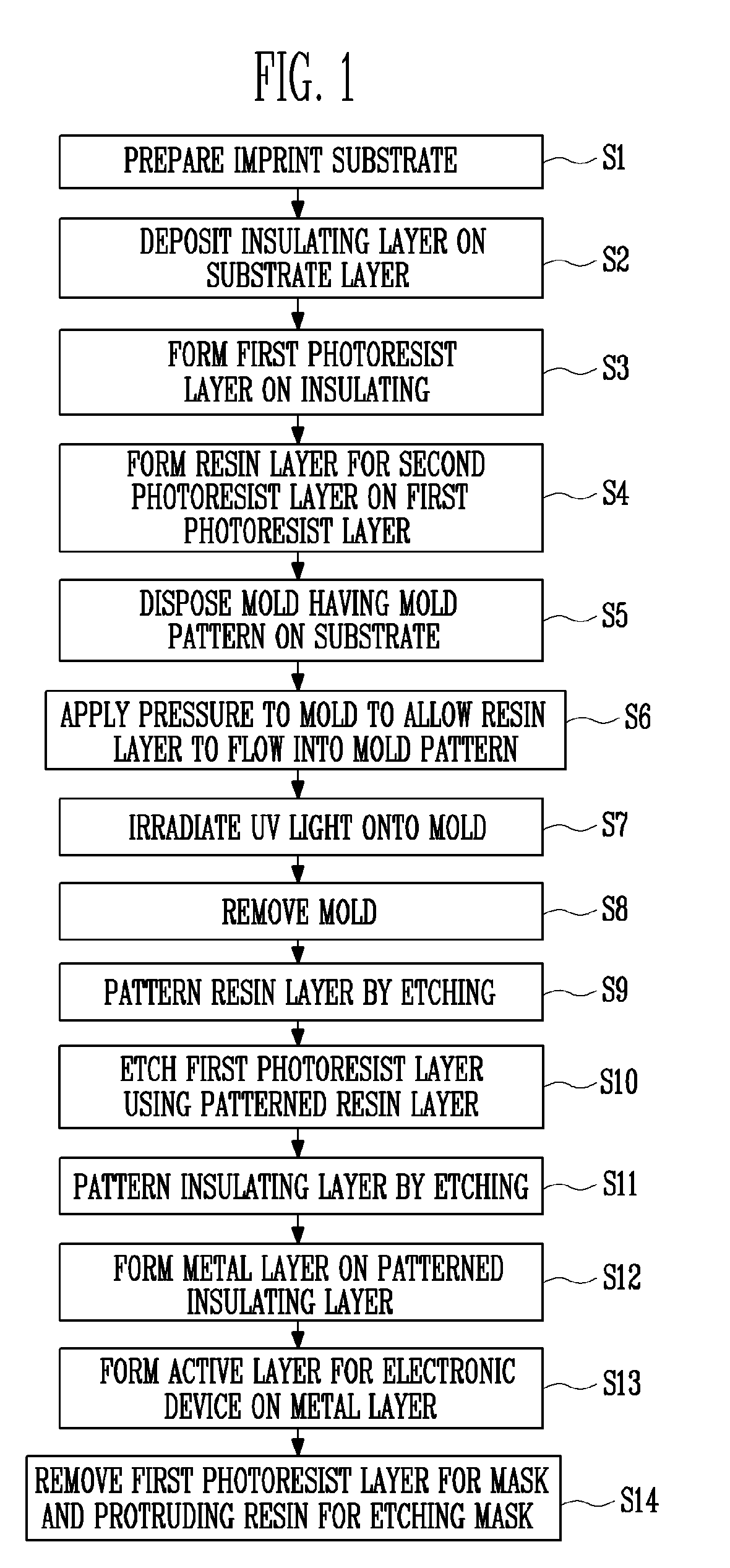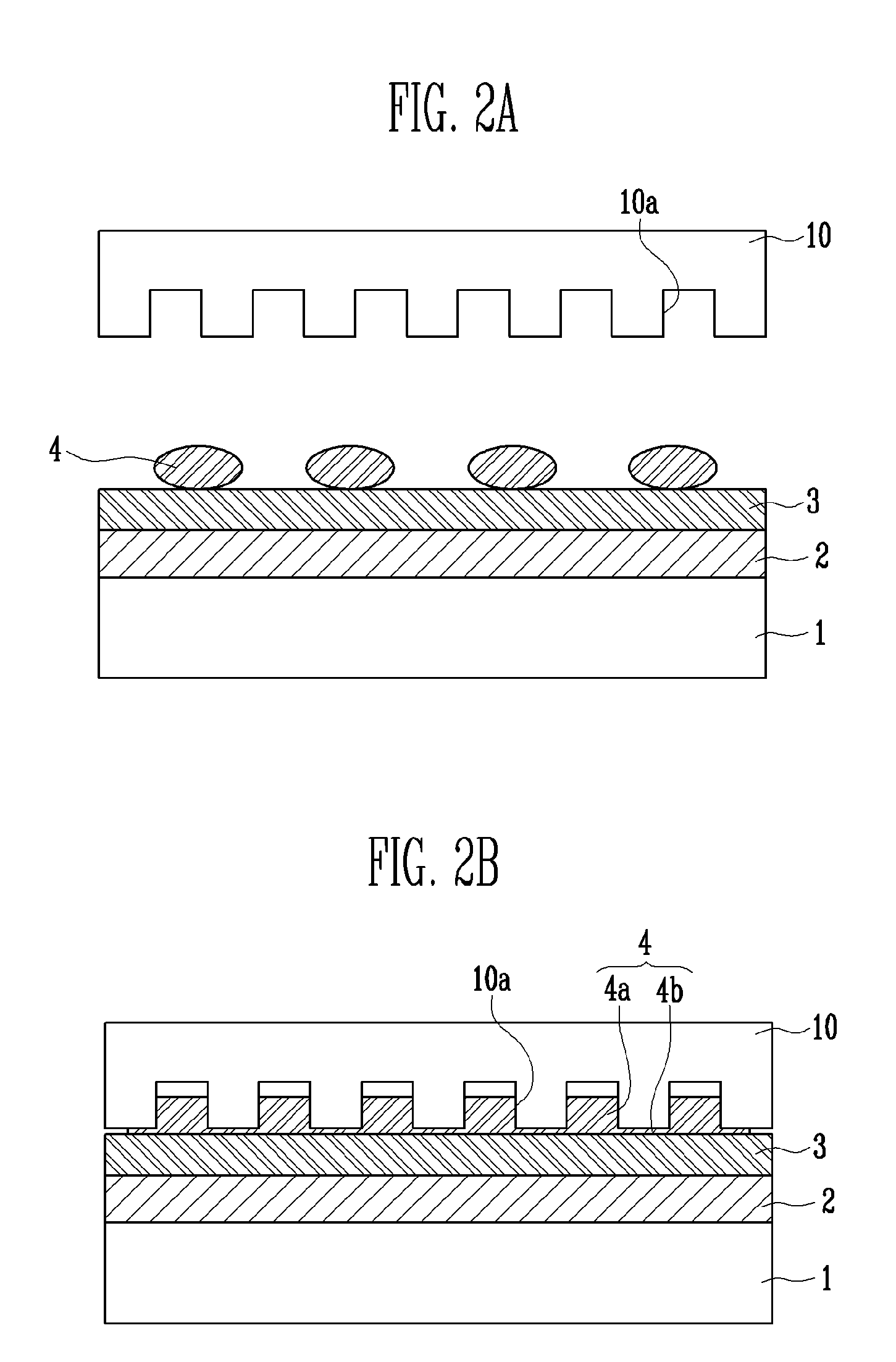Method of manufacturing nanoelectrode lines using nanoimprint lithography process
a nano-imprint lithography and nano-electrode technology, applied in photomechanical treatment, instruments, electrical equipment, etc., can solve the problems of mold and substrate deformation or damage, difficult to form superfine patterns, and long formation time of large patterns
- Summary
- Abstract
- Description
- Claims
- Application Information
AI Technical Summary
Benefits of technology
Problems solved by technology
Method used
Image
Examples
Embodiment Construction
[0018]The present invention will now be described more fully with reference to the accompanying drawings, in which exemplary embodiments of the invention are shown. This invention may, however, be embodied in different forms and should not be construed as limited to the embodiments set forth herein.
[0019]FIG. 1 is a flowchart illustrating a method of manufacturing nanoelectrode lines between insulating layer patterns using a nanoimprint lithography process according to an exemplary embodiment of the present invention, and FIGS. 2A through 2J are cross-sectional views illustrating the method shown in FIG. 1.
[0020]Referring to FIGS. 1 and 2A, first, an imprint substrate 1 is prepared in step S1. The imprint substrate 1 may be a silicon wafer. In the present embodiment, the silicon wafer may be a 200-mm thick double-sided silicon wafer.
[0021]In step S2, an insulating layer 2 is deposited on the imprint substrate 1. The insulating layer 2 is formed of one of SiO2, SiNx, and alumina to a...
PUM
| Property | Measurement | Unit |
|---|---|---|
| wavelength | aaaaa | aaaaa |
| thickness | aaaaa | aaaaa |
| temperature | aaaaa | aaaaa |
Abstract
Description
Claims
Application Information
 Login to View More
Login to View More - R&D
- Intellectual Property
- Life Sciences
- Materials
- Tech Scout
- Unparalleled Data Quality
- Higher Quality Content
- 60% Fewer Hallucinations
Browse by: Latest US Patents, China's latest patents, Technical Efficacy Thesaurus, Application Domain, Technology Topic, Popular Technical Reports.
© 2025 PatSnap. All rights reserved.Legal|Privacy policy|Modern Slavery Act Transparency Statement|Sitemap|About US| Contact US: help@patsnap.com



